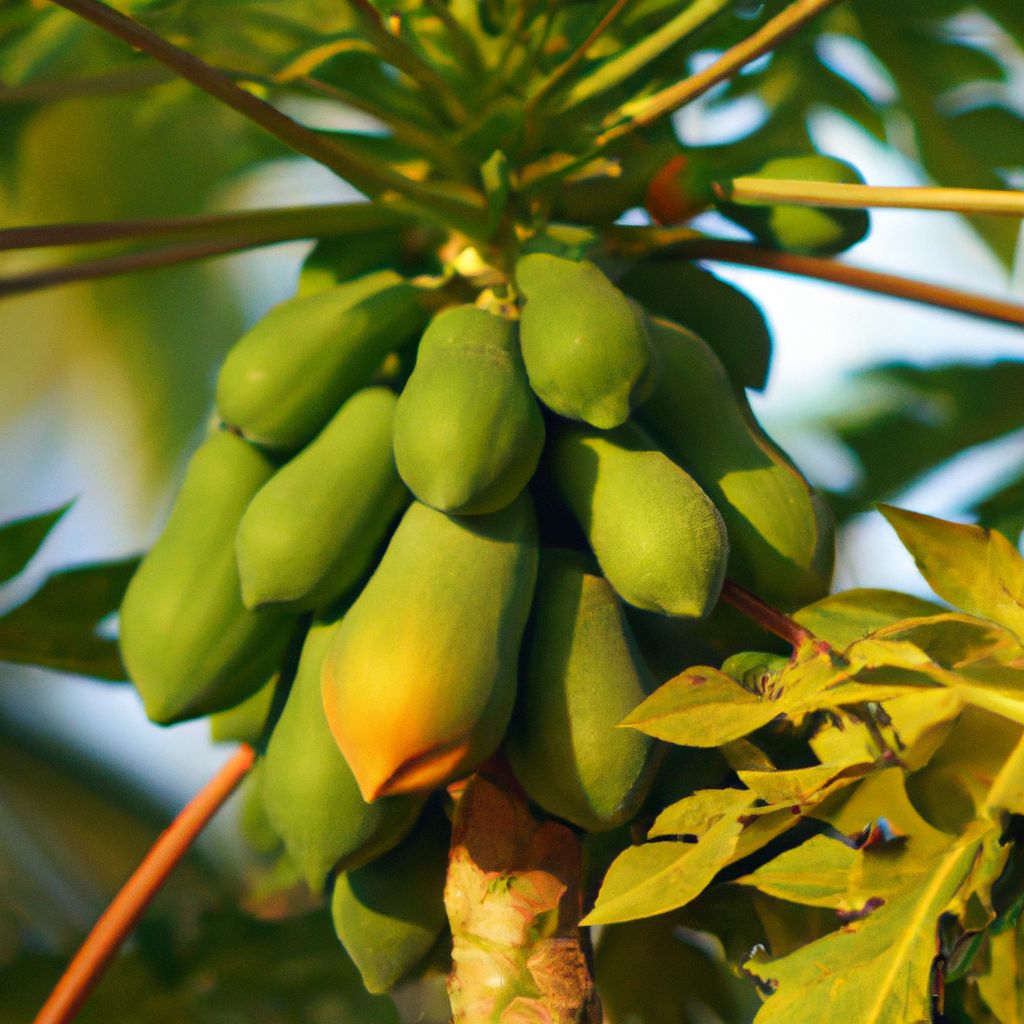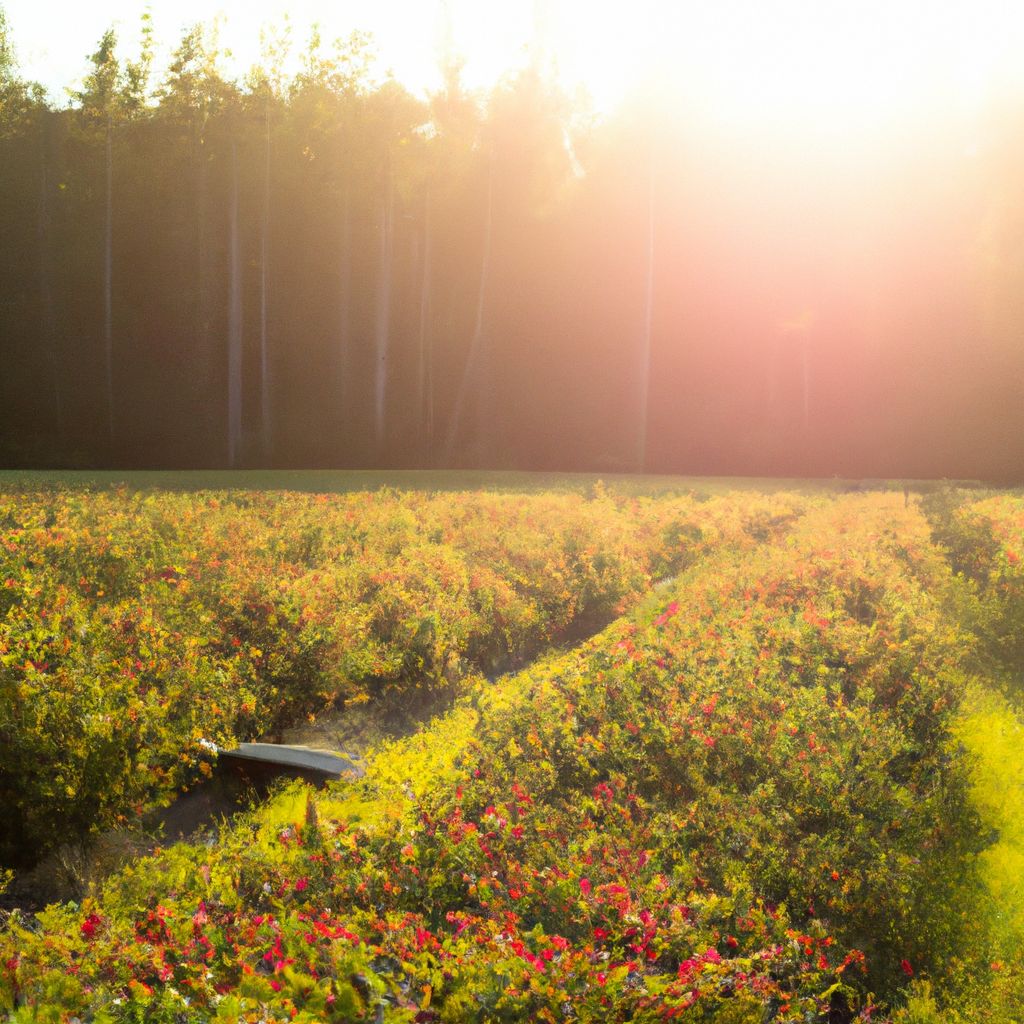The Rich History of Papaya
Papayas, also known as Carica papaya, have a storied history. Originating from the tropical regions of the Americas, particularly southern Mexico and Central America, they were revered by ancient civilizations.
- Historical Significance: The Mayans and Aztecs not only consumed papayas for their sweet taste but also used them for medicinal purposes. They believed the fruit had healing properties and often used it in rituals. Ancient texts and murals often depict papayas as a symbol of life and fertility.
- Global Distribution: Spanish and Portuguese explorers were fascinated by the fruit and played a pivotal role in introducing it to various parts of Asia, Africa, and the Pacific. Today, papayas are grown in tropical and subtropical regions around the world. Their global journey is a testament to their adaptability and universal appeal.

Selecting the Right Variety for Your Garden
Choosing the right papaya variety is crucial. Factors like your local climate, available space, and personal taste preferences play a role.
Dwarf Papaya Varieties
Ideal for small gardens, patios, or balconies, dwarf papayas are compact but don’t compromise on taste.
- Honey Dwarf: Known for its intensely sweet taste and smaller fruits. This variety is perfect for those with limited space but still want a bountiful harvest.
- Strawberry Papaya: Recognized by its reddish flesh and berry-like flavor. It’s a favorite among chefs for its unique taste profile.
- Tainung No. 2: A prolific producer, it’s resistant to most common papaya diseases and is known for its consistent fruit quality.
Standard Papaya Varieties
For those with spacious gardens, standard papayas offer larger fruits and a classic papaya taste.
- Red Lady: A fast-growing variety, it’s known for its deep red flesh and resistance to papaya ringspot virus. It’s also a favorite for commercial growers due to its consistent yield.
- Kapoho Solo: Originating from Hawaii, it’s sweet with a hint of melon flavor. This variety is also known for its resilience against pests.
- Sunrise Solo: This variety boasts a longer shelf life, making it perfect for those who want to enjoy their harvest over time. It’s also known for its vibrant orange flesh and sweet taste.
Essential Growing Conditions

Climate and Temperature Needs
Papayas are tropical fruits, and their growth reflects that.
- Temperature Range: Ideal temperatures range between 70-100°F. However, specific varieties might have slight variations in their preferred temperature. For instance, the Red Lady can tolerate slightly cooler temperatures, while the Sunrise Solo prefers the warmer end of the spectrum.
- Frost Sensitivity: Papayas are sensitive to frost. If you’re in a region with cold winters, consider growing them in pots that can be moved indoors or investing in frost covers.
Soil Preferences and Preparation
The foundation of a healthy papaya tree is the soil it’s planted in.
- Soil Type: Papayas prefer well-draining soil. Sandy loam or loamy soil types are ideal. Heavy clay soils can be amended with organic matter to improve drainage.
- pH Levels: A slightly acidic to neutral pH (5.5-6.5) is preferred. Regularly test your soil and amend with lime or sulfur to adjust the pH as needed.
- Soil Enrichment: Before planting, enrich the soil with compost or well-rotted manure. This not only provides essential nutrients but also improves soil structure. Regular mulching can also help retain soil moisture and suppress weeds.
Sunlight and Watering Requirements
- Sunlight: Papayas thrive in full sun, requiring at least 8 hours daily. Ensure they’re planted in a location that isn’t shaded. If growing indoors or in a greenhouse, supplemental lighting might be necessary during the winter months.
- Watering: While they need regular watering, it’s essential to ensure the soil isn’t waterlogged. Overwatering can lead to root rot. A drip irrigation system or soaker hose can provide consistent moisture without wetting the foliage.
Planting and Care

From Seed to Sapling
Starting papayas from seeds can be a rewarding process.
- Seed Collection: Obtain fresh papaya seeds from a ripe fruit. It’s best to source seeds from a trusted local nursery or a fruit known to be of a specific variety.
- Preparation: Rinse the seeds to remove any pulp and soak them for 24 hours. This softens the outer seed coat and improves germination rates.
- Planting: Sow seeds 1/4 inch deep in seed trays filled with a mix of potting soil and sand. Place the trays in a warm location, ideally between 70-85°F.
- Germination: With proper care, you’ll see saplings emerge in 2-4 weeks. Once they have a few sets of true leaves, they can be transplanted to larger pots or directly into the garden.
Transplanting Tips
Once your saplings are about a foot tall, they’re ready for their permanent spot.
- Location: Choose a sunny location, ensuring the plant will receive ample sunlight throughout the day. Avoid areas where water tends to collect.
- Planting: Dig a hole twice the size of the sapling’s root ball. Place the sapling in, ensuring it’s at the same depth as it was in its pot. Fill the hole with soil, gently pressing down to remove any air pockets.
- Watering: Water generously after planting to help the plant settle. For the first few weeks, keep the soil consistently moist to help the plant establish.
Ongoing Care
- Watering: Water regularly but ensure the soil has time to dry out between sessions. As the plant matures, you can reduce the frequency of watering.
- Fertilizing: Use a balanced fruit tree fertilizer. During the fruiting season, consider increasing the frequency of fertilization to support the growing fruits. Organic options like fish emulsion or seaweed extract can provide essential micronutrients.
- Pruning: Regularly prune to remove dead or diseased branches. This not only keeps the tree healthy but also improves air circulation, reducing the risk of fungal diseases. As the tree matures, you can also prune to shape it and control its size.
Pest and Disease Management
Like all plants, papayas can be susceptible to pests and diseases.
- Common Pests: Spider mites, aphids, and fruit flies can be a nuisance. Regularly inspect your tree and consider organic treatments like neem oil or insecticidal soap to combat these pests. Introducing beneficial insects like ladybugs can also help control aphid populations.
- Diseases: Papayas can be affected by diseases like papaya ringspot virus, anthracnose, and powdery mildew. Early detection and treatment are crucial. Ensure good air circulation and avoid overhead watering to reduce the risk of fungal diseases. If a plant is severely affected, it might be best to remove and destroy it to prevent the spread of the disease.
Harvesting and Enjoying Your Fruit

Signs of a Ripe Papaya
A ripe papaya will have a yellow to orange skin and will yield slightly to pressure. The exact time from planting to harvest can vary based on the variety and growing conditions, but typically it’s between 6-9 months.
- Harvesting Tips: Use sharp pruning shears or a knife to cut the fruit stem. Handle the fruit gently to avoid bruising. If you’re unsure about the ripeness, pick one fruit and let it ripen indoors for a few days. If it ripens well, you can harvest the rest.
Storing and Preserving
Once harvested, papayas can be stored at room temperature for up to a week. If you wish to extend their shelf life, consider refrigerating them. For long-term storage, papaya can be pureed and frozen or made into jams and preserves.
- Freezing: Slice the papaya, remove the seeds, and cut the flesh into cubes. Spread the cubes on a baking sheet and freeze until solid. Transfer the frozen cubes to a zip-top bag and store in the freezer.
- Drying: Papaya can be dried in a dehydrator or an oven set to a low temperature. Once dried, store in an airtight container in a cool, dark place.
Beyond the Fruit – Other Uses of Papaya
Papayas are incredibly versatile. Beyond the sweet fruit, other parts of the plant have culinary and medicinal uses.
- Green Papaya: Unripe or green papayas can be used in salads, stews, and curries. They have a slightly tangy taste and are rich in the enzyme papain, which aids digestion. Green papaya salad is a popular dish in Southeast Asian cuisine.
- Papaya Seeds: The seeds have a peppery flavor and can be used as a spice or garnish. They also have potential health benefits, including anti-parasitic properties. Some cultures consume papaya seeds as a natural remedy for intestinal worms.
- Papaya Leaves: Rich in enzymes, the leaves can be brewed into a tea believed to aid digestion and boost the immune system. In some cultures, papaya leaves are also used as a natural remedy for dengue fever.

The Environmental Impact of Homegrown Papaya
Growing papayas at home has several environmental benefits.
- Carbon Footprint: By growing and consuming papayas locally, you significantly reduce the carbon footprint associated with transporting store-bought papayas.
- Biodiversity: Papaya trees attract a variety of pollinators, promoting biodiversity in your local ecosystem. By growing papayas without the use of synthetic pesticides, you also provide a safe habitat for beneficial insects.
- Soil Health: Papaya trees, with their deep roots, prevent soil erosion and improve soil structure over time. They also play a role in nutrient cycling, taking up nutrients from the deeper layers of soil and bringing them to the surface.
Embracing the Tropical Experience
Growing papaya at home is more than just gardening; it’s an immersive experience. From the joy of planting to the satisfaction of harvesting and the pleasure of tasting, every step is a testament to nature’s bounty. Dive into this tropical journey, and let the sweet and vibrant essence of papaya enrich your life. Whether you’re enjoying a fresh papaya smoothie on a hot day or indulging in a green papaya salad, the flavors and memories of your homegrown papaya will stay with you forever.















































